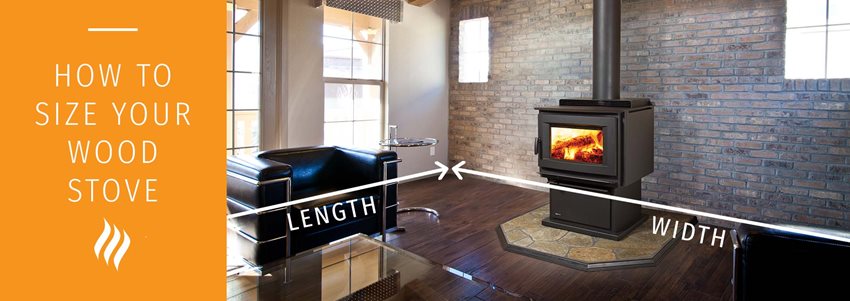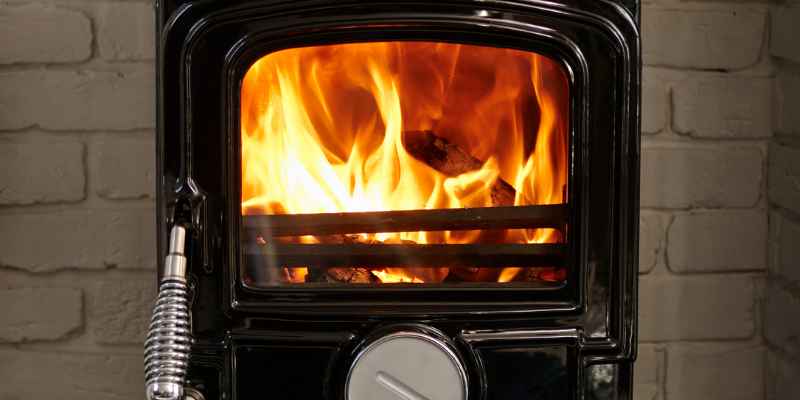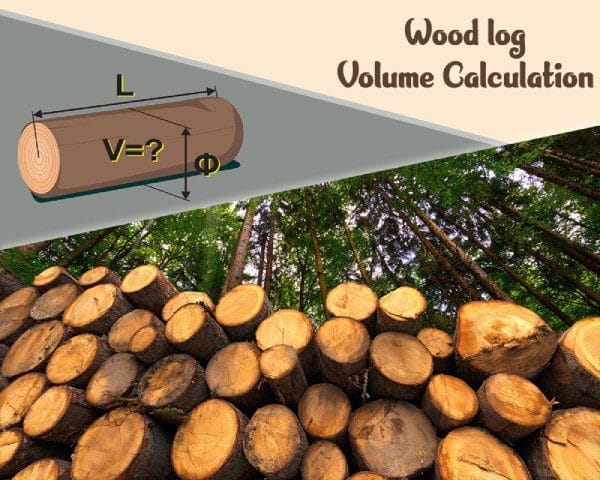What Size Wood Burner Calculator: Find Your Perfect Fit Now!
A wood burner calculator determines the size of the wood burner you need for your space. Wood burner calculators consider factors like room size and insulation to provide accurate recommendations.
Choosing the right size wood burner is essential for efficient heat output and cost-effective heating. With a properly sized wood burner, you can achieve the ideal temperature and comfort in your home without wasting energy or overloading your space. Whether you are a homeowner or a business owner, using a wood burner calculator can help you make an informed decision about the size of wood burner to purchase.
By considering factors such as the dimensions of the room and the type of insulation, the calculator can provide you with a suitable wood burner size, ensuring optimal heating performance.

Credit: www.regency-fire.com
Choosing The Right Wood Burner
Calculate the right size wood burner to suit your space with our online calculator. Simply input the dimensions of your room and the calculator will recommend the ideal wood burner size for efficient heating and a cozy ambiance. Make the right choice for your home with our wood burner size calculator.
When it comes to heating your home efficiently and cozily, a wood burner is an excellent choice. However, with so many options available in the market, it can be overwhelming to choose the right one for your space.
To ensure you make the best decision, it is important to consider factors such as calculating heat output and considering room size. In this article, we will guide you through these essential steps, helping you choose the perfect wood burner for your needs.
Calculating Heat Output
Calculating the heat output of a wood burner is crucial to determine its ability to adequately warm your space. To accurately determine the heat output required for your room, you can use a Wood Burner Calculator.
This tool takes into account various factors such as room dimensions, insulation, and desired temperature, providing you with an estimation of the required heat output in kilowatts (kW). By using a Wood Burner Calculator, you can avoid purchasing a wood burner that is too small or too powerful for your needs.
Considering Room Size
The size of your room is an important consideration when selecting a wood burner. A wood burner that is too large for your space can result in wasted heat and inefficient fuel consumption, while a wood burner that is too small may struggle to effectively heat the room. To determine the right size, you can refer to the heat output estimation provided by the Wood Burner Calculator.
Additionally, it is advisable to consider factors such as ceiling height, insulation quality, and room layout. Remember, it’s always better to opt for a slightly larger wood burner if you have higher ceilings or less insulation.
By accurately calculating the heat output and considering the size of your room, you can confidently select a wood burner that meets your specific heating needs. Don’t forget to also take into account other factors such as design, maintenance requirements, and safety certifications when making your final decision. With the right wood burner, you can enjoy cozy warmth and energy-saving benefits while creating a charming atmosphere in your home.
Understanding Wood Burner Efficiency
When it comes to choosing a wood burner for your home, understanding wood burner efficiency is key. Efficiency ratings provide valuable information about how effectively a wood burner converts fuel into heat, allowing you to make an informed decision.
Understanding Efficiency Ratings
Wood burner efficiency ratings are represented as a percentage, indicating the amount of heat produced compared to the fuel consumed. A higher efficiency rating means that more heat is being generated from the wood, resulting in greater warmth for your home and lower heating costs.
An efficient wood burner:
- Produces more heat
- Uses less wood
- Reduces emissions
- Provides longer burn times
Efficiency ratings typically range from 60% to 80+%. It’s important to note that older wood burners may have lower efficiency ratings compared to newer models due to advancements in technology. Investing in a highly efficient wood burner not only saves you money on heating costs but also helps reduce your environmental impact.
Impact Of Efficiency On Heating Costs
Your choice of wood burner can have a significant impact on your heating costs. An inefficient wood burner would require more wood to produce the same amount of heat, resulting in higher fuel expenses. By choosing a highly efficient wood burner, you can maximize heat output and minimize the amount of wood needed for heating your home.
Let’s consider an example. If you are currently using a wood burner with a 60% efficiency rating and you burn 3 cords of wood per winter season, upgrading to a wood burner with an efficiency rating of 80% would reduce your wood consumption to just over 2 cords. This means you could potentially save on wood costs, depending on the price of firewood in your area.
Additionally, a more efficient wood burner allows for longer burn times. This means you can enjoy a cozy and warm atmosphere without constantly refueling the fire. Not only does this save you time and effort, but it also reduces the amount of wood required over time.
Overall, understanding wood burner efficiency and its impact on heating costs is essential when choosing the right wood burner for your home. By investing in a highly efficient wood burner, you can enjoy efficient heat production, cost savings, and a reduced environmental footprint.
Factors Affecting Wood Burner Sizing
Wood burner sizing is influenced by factors like room size, insulation, climate, and ceiling height. Using a wood burner calculator helps determine the right size for optimal heating efficiency. Consider these factors when selecting a wood burner to ensure maximum performance and comfort in your space.
When it comes to choosing the right size wood burner, several factors come into play. By considering these factors, you can ensure that you select a wood burner that is perfectly suited to your specific needs and the requirements of your space. Let’s explore some of the key factors that affect wood burner sizing.
Building Insulation
The level of insulation in your building plays a crucial role in determining the size of the wood burner needed. Well-insulated buildings require smaller wood burners, as they retain heat more effectively. In contrast, poorly insulated structures may necessitate a larger wood burner to adequately heat the space.
Ceiling Height and Airflow
The ceiling height of your space directly impacts the dispersion of heat. Tall ceilings may require a larger wood burner to effectively distribute warmth throughout the room. Additionally, considering the airflow within the area where the wood burner will be installed is essential. Proper airflow ensures that the heat is evenly circulated, impacting the size of the wood burner needed.
In conclusion, these factors play a crucial role in determining the appropriate size wood burner for your space. By carefully considering building insulation, ceiling height, and airflow, you can confidently select a wood burner that meets the heating requirements of your home or building.
Installing Your Wood Burner
Place the wood burner in a central location for optimal heat distribution.
Keep it away from walls and furniture to avoid fire hazards and ensure proper airflow.
Install a carbon monoxide detector near the wood burner to monitor air quality.
Ensure proper ventilation by opening windows slightly when using the wood burner.
Types Of Wood Burners

Freestanding Vs. Insert Models
Freestanding wood burners stand alone, adding a traditional aesthetic to a room, while insert models are installed into existing fireplace openings.
Multi-fuel Vs. Wood-only Burners
Multi-fuel burners offer versatility by burning various fuels like wood, coal, and peat, while wood-only burners focus solely on burning wood for a cleaner option.
Maintenance And Cleaning
Discover the perfect wood burner size with our calculator, simplifying maintenance and cleaning tasks. Easily determine the ideal fit for your space, optimizing efficiency while minimizing upkeep. Efficiently calculate wood burner size for hassle-free maintenance and cleaning. Choose the perfect fit for your space with our user-friendly calculator, ensuring optimal performance and ease of care.
Regular Maintenance Tasks
Regular maintenance is crucial to ensure proper functioning of your wood burner. Here are some tasks you should perform on a consistent basis:
– Clean the glass window regularly to remove soot and dirt buildup.
– Inspect the door seals and gaskets for any signs of wear and tear, and replace if necessary.
– Clear the ash from the firebox after each use to maintain proper airflow.
Cleaning Tips for Efficient Operation
To ensure your wood burner operates efficiently, follow these cleaning tips:
1. Clean the chimney flue regularly to remove creosote buildup, which can lead to chimney fires.
2. Use a chimney sweep to remove any debris or obstructions from the chimney.
3. Clean the air vents and fans to ensure proper ventilation and airflow.
By performing these maintenance and cleaning tasks regularly, you can extend the lifespan of your wood burner and ensure efficient operation.
Environmental Impact
When choosing a wood burner for your home, it is crucial to consider its environmental impact. Wood burners can contribute to air pollution and deforestation if not utilized responsibly. By using a wood burner calculator, you can determine the appropriate size of wood burner for your needs, which helps minimize the negative impact on the environment.
Emissions And Air Quality
One of the key factors to consider when evaluating the environmental impact of a wood burner is its emissions and effect on air quality. Wood burners can release pollutants such as particulate matter (PM), nitrogen oxides (NOx), carbon monoxide (CO), and volatile organic compounds (VOCs). These emissions can contribute to smog formation and can have detrimental effects on human health.
To ensure that your wood burner operates within acceptable emission levels, it is important to select the right size based on your home’s heating requirements. An appropriately sized wood burner will allow for efficient combustion, reducing emissions and improving air quality. By using a wood burner calculator, you can accurately determine the optimal size to minimize environmental impact.
Sustainable Wood Sourcing
Another aspect of the environmental impact of wood burners revolves around the sourcing of the fuel itself. Unsustainable logging practices can lead to deforestation and habitat destruction. To mitigate these concerns, it is essential to prioritize the use of sustainably sourced wood.
When selecting a wood burner size, consider the availability of sustainably sourced wood in your area. Opting for a smaller wood burner may be beneficial if it allows you to obtain wood from trusted and certified sources. This choice promotes responsible forestry practices and helps maintain the ecological balance of our forests.
In conclusion, the environmental impact of your wood burner can be significantly reduced by using a wood burner calculator to determine the appropriate size and ensuring sustainable wood sourcing. By doing so, you can enjoy the warmth and comfort of your wood burner while minimizing negative effects on the environment and promoting cleaner air quality.
Legal Regulations
When installing a wood burner, it’s crucial to consider the legal regulations that govern the process. Adhering to these regulations ensures the safety of your home and the environment. Understanding the building codes and permits as well as the EPA certification requirements will help you navigate through the legal landscape. Let’s delve deeper into these aspects:
Building Codes And Permits
Before installing a wood burner, it’s essential to familiarize yourself with the building codes and permits associated with it. Building codes vary by location and can include guidelines on clearance distances, ventilation requirements, chimney installation, and more. These codes ensure that your wood burner is installed safely, minimizing the risk of fire and ensuring proper ventilation.
Obtaining the necessary permits is equally important, as it ensures that the installation is done in compliance with local regulations. Permits can be obtained from your city or county building department. They typically require detailed information about the installation plans, such as the location of the wood burner, chimney specifications, and clearances.
Epa Certification Requirements
Wood burners that meet the Environmental Protection Agency (EPA) certification requirements are designed to be more efficient and environmentally friendly. EPA-certified wood burners use technology that reduces emissions and increases fuel efficiency, contributing to cleaner air and lower energy consumption.
When selecting a wood burner, look for the EPA certification label, which indicates that the stove meets the stringent emission and efficiency criteria set by the EPA. These criteria ensure that the wood burner operates at optimal efficiency while minimizing harmful pollutants released into the atmosphere.
By choosing an EPA-certified wood burner, you not only comply with legal regulations but also take a step towards reducing your carbon footprint and protecting the environment.
Conclusion
Understanding the legal regulations surrounding wood burner installations is crucial for a safe and compliant setup. By familiarizing yourself with the building codes and permits specific to your location and selecting an EPA-certified wood burner, you can enjoy the warmth and comfort of a wood-burning stove while prioritizing safety and environmental responsibility.

Frequently Asked Questions On What Size Wood Burner Calculator
What Factors Should I Consider When Choosing A Wood Burner Size?
When choosing a wood burner size, consider room size, insulation, and desired heat output. Consult with a professional for accurate sizing.
How Can I Calculate The Appropriate Size For A Wood Burner?
Calculate the size of a wood burner based on room dimensions, insulation levels, and desired heat output. Online calculators and professional advice can help.
Can A Wood Burner Be Too Big For My Space?
Yes, a wood burner that is too large can lead to overheating and inefficient use of fuel. Choosing the right size is crucial for optimal performance.
Conclusion
Determining the right size wood burner for your space is crucial. By using a wood burner calculator, you can accurately match the heat output to your room’s requirements. Understanding the size required will ensure optimal heating efficiency and a comfortable living environment.
Make sure to consider all factors before making your decision.







